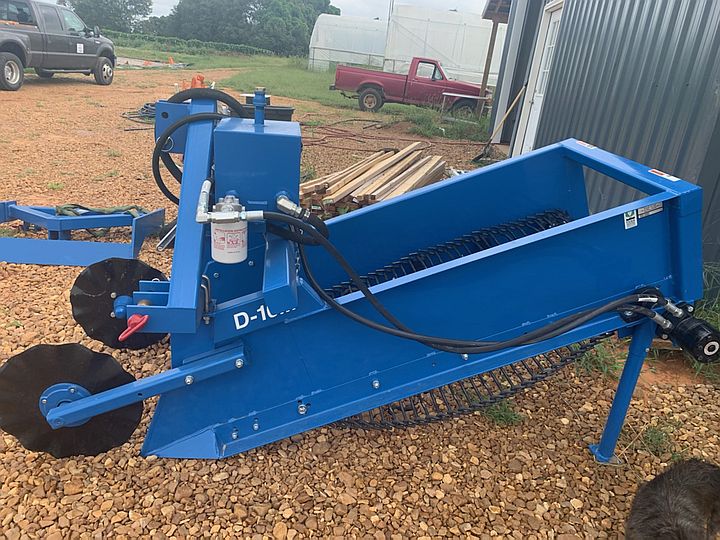It may still feel like summer, but I know it doesn’t last forever. We have a boat load of work to do before the soil gets wet and stays wet. Once the wet weather of fall sets in, the ground wont be dry again until April. It’s race to get things done before then. We need to dig the sweet potato crop, make all of our beds for spring 2021 planting, and turn in the summer crops.
September is usually a dry month. Not so this year. Hurricane Laura dumped about six inches of rain over the course of a few days at the end of August, leaving the field wet for over a week. We had dried out enough to start tractor work in the field and then more rain over the weekend. We are waiting again. And I am slightly panicking about it.
A new tool!
Normally we would have started the sweet potato harvest by now. If the plants have done well, we can expect to have around 4,000 lbs of sweet potatoes. That’s a lot of potatoes to dig and pick up. We always have a hard time getting the sweet potato harvest done on time. Last year we ended up leaving about 100 feet of sweet potatoes in the ground because by the time we got to them the ground was too wet and cold and it had effected the quality of the potatoes.
But we have a new tool. A shiny blue single row potato digger. It just arrived yesterday. We can’t wait until we can try it out! We are absolutely banking on it being easy to use and effective because we are going to need to get these potatoes harvested super quick. The harvester has a large open mouth that is pulled through the soil. The soil and potatoes climb the gentle incline of a slatted conveyor belt that shakes off all the soil and then drops the potatoes on the ground as the tractor drives along. We will still have to go along and collect up all the potatoes off of the ground, Fingers crossed. We can’t wait to try it out.
Spring is closer than you think
The only way we can have a spring garden – complete with carrots, lettuce, cabbage, radishes, beets, onions, potatoes, etc. – is by preparing the beds in the fall. If we don’t shape our beds in the fall, the ground is just too wet in the spring. The earliest we can get in the field is mid-April, which is when we are planting our first tomatoes. This is the number one priority. Last year we shaped beds in late September, and were we ever glad! The wet weather arrived early last year. We’d have been in big trouble otherwise. That is the anxiety that is hanging over my head now as the days creep by. Every day closer to fall.
Field sanitation – or- how not to undermine all your pest control methods
The final thing that needs to be done before wet weather sets in is plowing under the summer crops. This is an integrated pest management best practice called “field sanitation” or “field hygiene”. Yesterday I was taking down the old trellis for the butternut squash and I saw plenty of squash bugs. Dead standing plants and weedy areas provide winter habitat for pests. If we leave this stuff in the field over the winter it will come back to haunt us in a big way. Before the garden can be plowed under, we have lots of posts and fencing to take down.
Small Shares
Watermelon
Juliet or Sakura tomatoes
Butternut squash
Arugula/mustard mix
Okra
Radishes
Full shares
Watermelon
Juliet or Sakura tomatoes
Slicing tomatoes
Butternut squash
Arugula/mustard mix
Mustard greens bunched
Okra
Radishes




You must be logged in to post a comment.